Urinary disorders
Urinary disorders
Incontinence is the involuntary leakage of urine and can be a possible consequence of prostate cancer treatment. Any treatment that requires prostate surgery or that destroys prostate tissue, such as radiotherapy or brachytherapy, may affect continence or urination. This can be explained by the proximity of the bladder and the fact that the prostate surrounds the urethra (the channel that allows the elimination of urine). Urinary incontinence is more exceptional after radiation therapy but is immediate after surgery and improves with time.
Overview
The most common types of urinary incontinence following treatment in men
- Stress incontinence – It is the leakage of urine as a result of physical exertion such as coughing, sneezing, lifting heavy objects, or exercising. This is the most common type of incontinence in men after prostate surgery.
- Urge incontinence – It occurs when the bladder has involuntary contractions and causes leakage of urine. There is a strong feeling of having to urinate right away and not making it on time to the toilet.
- This is the type most often seen after radiotherapy treatment.
- Overflow incontinence – It is the loss of small amounts of urine from a bladder that is always full. Another common cause is stenosis of the urethra, a scar in or around your urethra that can reduce your urine stream or narrowing of the bladder neck as a result of the surgery.
Incontinence after the surgery
Most men do not have permanent incontinence after prostate surgery. Following radical surgery, it is most often stress incontinence. This incontinence is frequent in the days following the operation and most often improves over time.
When the probe is removed, one to two weeks after the procedure, the majority of men have difficulty controlling their urination (urgent need to urinate, loss of urine in case of stress). Urinary incontinence is a normal short-term complication. For most men, things gradually return to normal between 1 and 12 months after the operation. After 6 months, most men will only leak a few drops of urine when lifting objects, sneezing or coughing during this period.
Less than 5 to 10% of men will have significant incontinence one year after the procedure. For a small number of men, it can be permanent. To minimize the duration of incontinence, starting pelvic physiotherapy can be an excellent way to improve your continence by learning to do exercises more effectively (e.g. Kegel exercises).
Some men may also suffer from urinary incontinence, which is a strong and sudden urge to urinate. In these cases, they may be small urine leaks (a few drops) or sometimes major leaks, or even urination involuntary complete (the bladder suddenly empties so much the desire is urgent). This impetuousness may be due to uncontrolled contractions of the muscle in your bladder that causes bladder weakness. This problem is and, if necessary, your doctor will prescribe medications that will help the bladder contract less.
It is important to distinguish between the two types of incontinence – stress and urge incontinence – because medical and surgical management are very different. Most often one of the two types of incontinence predominates and its treatment will be given priority.
The narrowing of the bladder neck after surgery
In the long term, a narrowing of the urethra may appear. In and, during the prostatectomy, the urethra, through which the urine flows, is sutured to the bladder. Sometimes this duct narrows around the suture’s location: what is known as stenosis of vesicourethral anastomosis (less than 5% of cases). It is noticeably manifested by a decrease in the strength of the urine stream, pain when urinating or even blood in the urine. However, this problem can be easily corrected. It requires an enlargement surgery through natural methods. If this complication appears, talk to your doctor who will work out a suitable solution.
Incontinence after radiation therapy
Less than 10% of men who expose their prostate to external radiation therapy experienced incontinence. Side effects of external prostate radiation therapy may include bladder inflammation that causes the urge to urinate, difficulty urinating, and burning sensations while urinating. In the acute phase, 30 to 50% of patients have a variety of symptoms – symptoms of obstructive urinary tract infections, symptoms related to radiocystitis (bladder inflammation) and incontinence symptoms – but over time, these symptoms decrease and will affect less than 5-10% of patients.
Obstructive symptoms of the urinary tract
Urinary obstruction is common due to inflammation of the bladder and the urethra from radiotherapy and particularly brachytherapy. Symptoms may include frequent urination, especially at night, the urge to urinate (urgency), difficulty urinating with a less intense stream and/or a burning sensation while urinating. Please note that radiocystic cystic fibrosis can cause blood in the urine (hematuria).
It is important to report them to your doctor in order to verify that they are not due to another cause (sometimes by carrying out additional examinations) and so that appropriate care can be offered to you.
In case of significant urinary disorders (e.g. urination every half an hour) with a very weak stream, pain in the lower abdomen and/or fever), contact your doctor as soon as possible.
Impact of urinary incontinence
Urinary incontinence in prostate cancer patients can provoke important psychological, emotional and physical reactions. It can create a lot of guilt, shame, frustration and anger. It can often result in a man being fearful and worried about wetting himself. Loss of self-esteem, self-image and confidence often follows.
Incontinence often implies restrictions on lifestyles. It affects activities of daily living such as consumption of fluids, choice of clothing, sexual activity and intimacy, practice of sports and travelling. Some people often isolate themselves out of fear of rejection. Having to purchase specialty urinary control undergarments can also become a financial burden. None of these responses need be the case, as many treatments are now available to effectively treat urinary incontinence.
The percentage of men experiencing urinary incontinence after being treated for prostate cancer has been difficult to evaluate. This may be due to different definitions of the degree of symptoms. For example, how one individual rates his “significant” incontinence may be defined quite differently by another man experiencing similar problems.
What I need to know
Symptoms to watch for and report to your doctor
- Decrease in strength of stream
- Need to push to urinate
- Intermittent stream
- Stream slow to start
- Late drops
- Sensation of incomplete voiding
- Urge to urinate during the night
- Blood in the urine
- Acute urinary retention
The medical evaluation includes:
- Your type of incontinence (stress/urge)
- Number of protective garments worn
- Evolution of your symptoms
- Therapies already implemented
Treatment includes:
- Lifestyle changes
- Rehabilitation of pelvic floor muscles
- Medication
- Surgery
Some forms of incontinence can lead to complications
- Repeated urinary infections
- Skin irritation
- Sores and redness
- Risk of falls and fractures in the elderly

Managing incontinence
The following are various strategies that can help you manage urinary problems caused by your prostate cancer treatment:
Lifestyle changes
Some urinary symptoms can be relieved by drinking fewer liquids, especially before bed, or by avoiding caffeine, alcohol, or spicy food. Men are encouraged to urinate regularly and not hold it until the last moment. For some people, weight loss can help improve urinary control. This approach also requires changing the medication causing the incontinence.
Kegel exercises (pelvic floor muscles)
These exercises strengthen your pelvic floor muscles around the urethra. These muscles contract to stop the flow of urine. Strengthening these muscles can help restore continence.
How to do your Kegels exercises
Kegel exercises are extremely effective in restoring continence after a radical prostatectomy. You should do these exercises before your surgery and continue them after the probe has been removed. With regular exercise, you should see a difference after five or six weeks.
Sitting, standing, or lying down, knees slightly apart, imagine you are fighting the urge to urinate or defecate. Contract the muscles you would use in this situation.
- Contract the muscles for 5 to 10 seconds.
- Relax your muscles for twice the length of the contraction time.
- Repeat contractions 12 to 20 times.
- Do these exercises 3 times a day.
To know if you are contracting the correct muscles, look at your penis, it should tighten and contract inward. You should also feel your rectum muscles (the muscles you tighten to hold in gas or stool) tighten.
When your muscles are stronger and you can hold it in yourself, you can reduce the exercises to a series of 10, two or three times a week. Remember that each man is different. It may be useful to consult a physiotherapist who specializes in perineal therapy (read below) for a few sessions in order to properly isolate these muscles when you exercise.
Pelvic physiotherapy
Physiotherapy in pelvic floor rehabilitation is recommended by doctors and aims to strengthen the pelvic floor muscles in order to contribute to a better closure of the urethra. Your physiotherapist, an expert in perineal reeducation, can advise you on good hydration habits (water resources), constipation control, urinary desire control techniques and the integration of good perineal contractions at the appropriate times. Several men who opted for radical surgery reported the benefits of pelvic physiotherapy after 10 sessions with a physiotherapist.
Treatments for incontinence
Medication
Some medications with anticholinergic properties can reduce bladder irritation and decrease spasms which can alleviate the urgency and frequency of urination (severe incontinence) and some forms of incontinence.
Surgery
Surgical treatments are mainly aimed at correcting urinary stress incontinence. If surgery is suggested, your doctor will perform tests, such as cystoscopy, to identify a blockage or narrowing of the urethra (stenosis). The choice of treatment is based on your background (general condition, age, diseases already known), your clinical situation (leakage characteristics), the surgeon’s experience, and your level of motivation.
There are various surgical options:
- Suburethral Strips – This type of surgery is primarily intended for patients with low (one daily protection) or moderate (two or three daily protections) urinary incontinence. The surgeon installs a strip to support the weakened muscles (muscles used to control urinary flow from the bladder) and prevent urine leakage.
- Artificial urinary sphincter – In cases of severe urinary incontinence, the placement of an artificial urinary sphincter may be proposed. It is most often used for patients with severe urinary incontinence (more than 4 daily protections). A sleeve is placed around the urethra to compress it. This sleeve can be deflated when urinating by activating a mechanical valve that is installed in the scrotum. This surgery is the most effective, but is more complex and requires constant maintenance by the patient.
Other interventions
- Eliminate blockage of the urethra – Scar tissue can sometimes accumulate in the urethra, causing it to narrow, reducing urinary flow, and preventing the bladder from emptying completely. This issue can be corrected by making.
- an incision in the scar tissue or by stretching the urethra.
- Correction of bladder neck constriction – This problem can be easily corrected. It then requires an enlargement surgery through natural means.
Radiation cystitis
Radiation therapy used to treat prostate cancer can irritate the bladder lining and urethra and cause inflammation.
Possible signs and symptoms:
- Urinary infection
- The need to urinate more often, at night especially
- Urgency to urinate
- Bladder spasms
- A burning sensation when urinating
- Difficulty urinating
- Presence of blood in the urine
- Incontinence
The appearance of symptoms associated with radiation cystitis differs from man to man. Symptoms may begin within a few days after the first treatment. Usually, symptoms diminish once treatment is completed. On the other hand, some men continue to have symptoms for several months after treatment, while others will have no symptoms until several months after their last treatment. It is important to talk to your doctor about your symptoms.
Treatments
Lifestyle changes
You can change your lifestyle to prevent or reduce symptoms associated with cystitis. Drink plenty of water (between 1.5 and 2 litres per day) and avoid soft drinks, drinks containing caffeine – such as tea, coffee and cola – and alcohol, as they can irritate the bladder.
Bladder wash-out
This is a liquid treatment that covers and protects the bladder mucosa, reducing irritation. A small tube (catheter) is passed through your penis and fills your bladder with the medication. Then you go to the toilet and empty your bladder.
Surgical treatment
If radiation cystitis is severe, you may need surgery to control urinary bleeding.
More extensive treatment
This may include oral medications or other interventions (hyperbaric chamber, etc.). There are pain medications that can also relieve your symptoms.
Urinary control devices
There are many products available in pharmacies and home health stores that can help you manage the loss of urine, though they are not considered to be treatments or a cure.
Protective undergarments
Many types of diapers and pads are now available in pharmacies and general stores. Many of these have been adapted to comfortably fit male anatomy.
Texas condom catheters
Texas condom catheters resemble a condom, with an opening at one end so that it can be connected to a bag attached to the leg. When the bag is full of urine, it is emptied manually. You can talk to your urologist to see if this is an option.
Urethral compression devices (external clamps)
Both clamps apply light pressure on the urinary canal, located on the underside of the penis, and prevent leakage. Proper tightness of the clamp is important in order to avoid pressure sores on the skin underneath the device.
N.B.: These clamps should not be worn for excessive periods of time. Some urologists suggest using them for only an hour or two at a time. You can ask your urologist for advice.
You are not alone
Just like prostate cancer itself, you do not have to suffer the effects of incontinence alone. Although it may seem like a delicate issue that is hard to share with others, there are many people who can help and support you. There are many resources at your disposal that can help make it easier for you to manage this problem from amongst both health professionals and various other groups.
Health professionals
Many people in the medical community, including your urologist and doctor, can help treat incontinence caused by your prostate cancer treatment and provide you with options or a plan to manage this issue. Your pharmacist can also provide you with the appropriate medication or products to limit the unpleasant side effects of urinary leakage.
A physiotherapist can be an excellent resource in helping you retrain your bladder. The website Ordre professionnel de la physiothérapie du Québec can help you find a professional close to you.
Organizations and other groups
It is difficult to live through a health problem when we are all alone, especially after undergoing treatment for prostate cancer. Fortunately, you can manage your incontinence by contacting specialized institutions or other people who are going through the same thing as you.
Urinary continence clinics such as the Clinique de continence urinaire de l’Institut universitaire de gériatrie de Montréal, offer a therapeutic follow‑up focused on urinary control in persons over the age of 65 who have bladder problems. There are also associations that you can consult for more information to help you manage your incontinence, including:
Additional Information - Side effects

Urologist’s advice: Treatments and information on prostate cancer
Learn more about the role of the urologist and the importance for a patient to gather adequate information after receiving a prostate cancer diagnosis.

How I coped with prostate cancer
A man with prostate cancer shares the challenges of his cancer experience.

Expert Opinion: Prostate Cancer and Sexual Disorders
How to manage erectile dysfunction after treatment?

Living with permanent erectile dysfunction
Managing permanent ED after prostate cancer is delicate. Discover strategies to cope with it.

Temporary erectile dysfonction due to treatement
Watch this webinar for advice on regaining your sexuality and redefining intimacy and self-image after prostate cancer treatment.

Urinary and sexual problems after treatment
Prostate cancer treatments can lead to side effects, such as erectile dysfunction and urinary incontinence, which vary in intensity and duration.
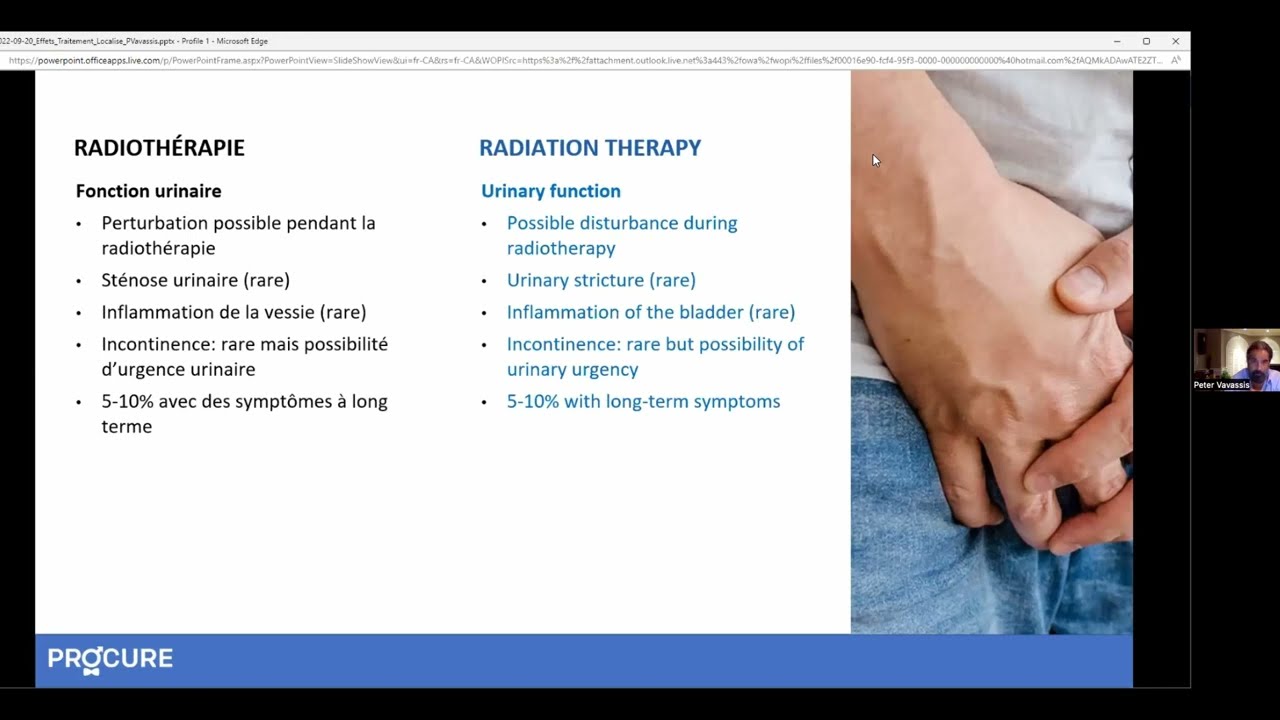
Urinary, sexual or intestinal problems
This webinar offers guidance on managing urinary, erectile, and intestinal functions after prostate cancer treatment.
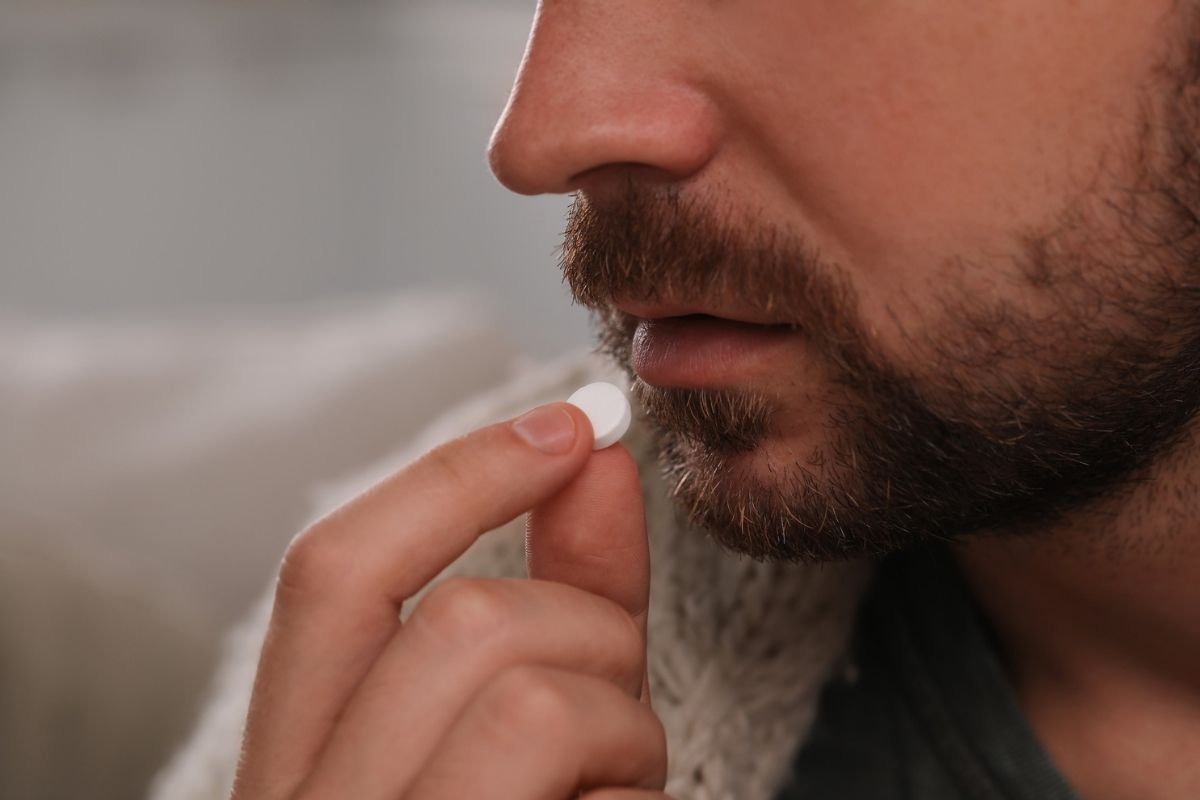
Do your medications cause erectile dysfunction?
Aside from prostate cancer treatments, if you experience erection problems such as erectile dysfunction, it’s crucial to understand that this can be related to various causes. Often, erectile dysfunction is triggered by reduced blood flow to the penis or issues affecting the nerves responsible for erection. These situations frequently arise from other health problems such […]
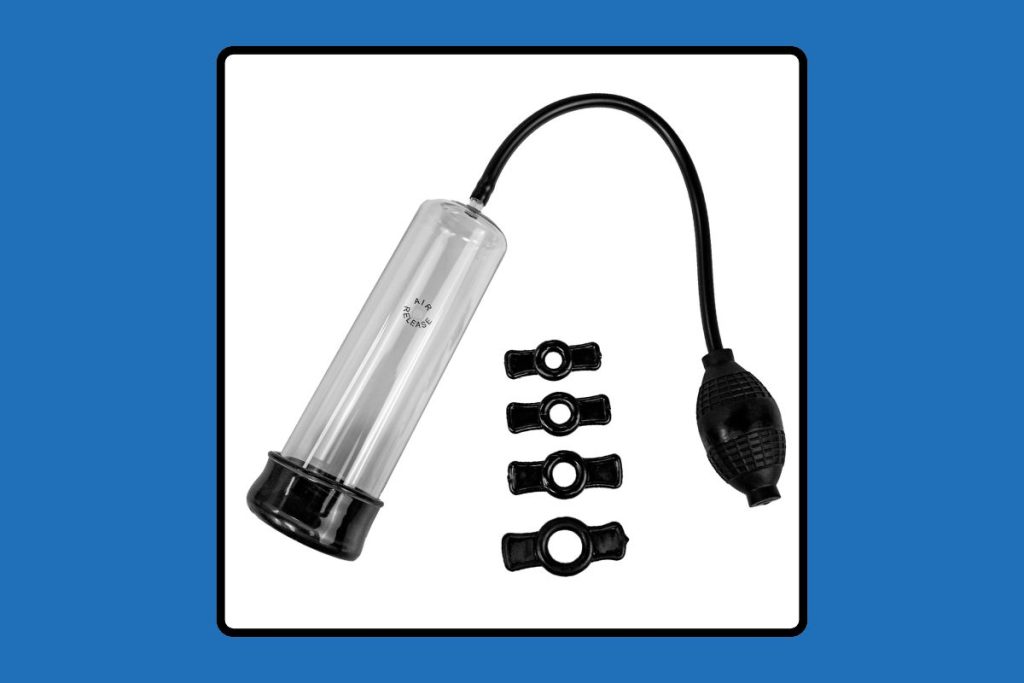
Vacuum erection devices: What you need to know
Vacuum erection devices (VEDs), or penile pumps, are a non-invasive solution for men experiencing erectile dysfunction (ED), particularly after radical surgery to treat prostate cancer. These devices can help restore erectile function, improving quality of life and intimacy. Let’s explore what to look for when buying a VED, the benefits of choosing a medical-grade device, […]

Living with permanent erectile dysfunction in 5 points
Living with permanent erectile dysfunction in 5 points outlines the essential considerations in navigating this reality. These tips serve as guiding principles to assist individuals, whether they are in a relationship or facing this situation alone. Healthcare professionals are here for you Sexuality is ever-present; it does not disappear with permanent erectile dysfunction. Consult healthcare […]

Sexuality and intimacy in 5 points
Sexuality and intimacy in 5 points addresses specific challenges and opportunities that may arise after treatment for prostate cancer.

Orgasm without erection?
It is entirely possible for a man to achieve orgasm without an erection or penetration and there are several ways to achieve this.

Food tastes funny…!
I feel like one of the worst effects was losing my taste buds. Everything I tried to eat tasted funny. So why food tastes funny?
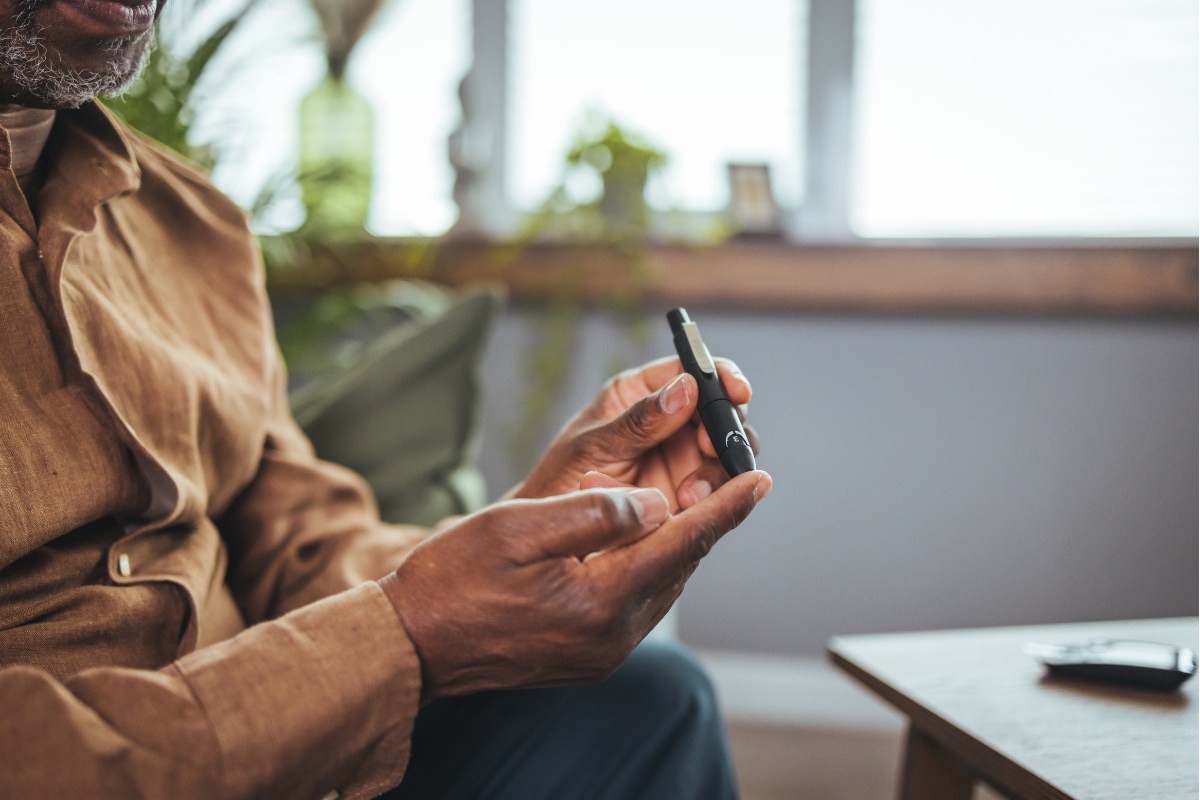
I am a little bit diabetic
My doctor informed me that I am a little bit diabetic and that I will have to make important changes to my lifestyle.
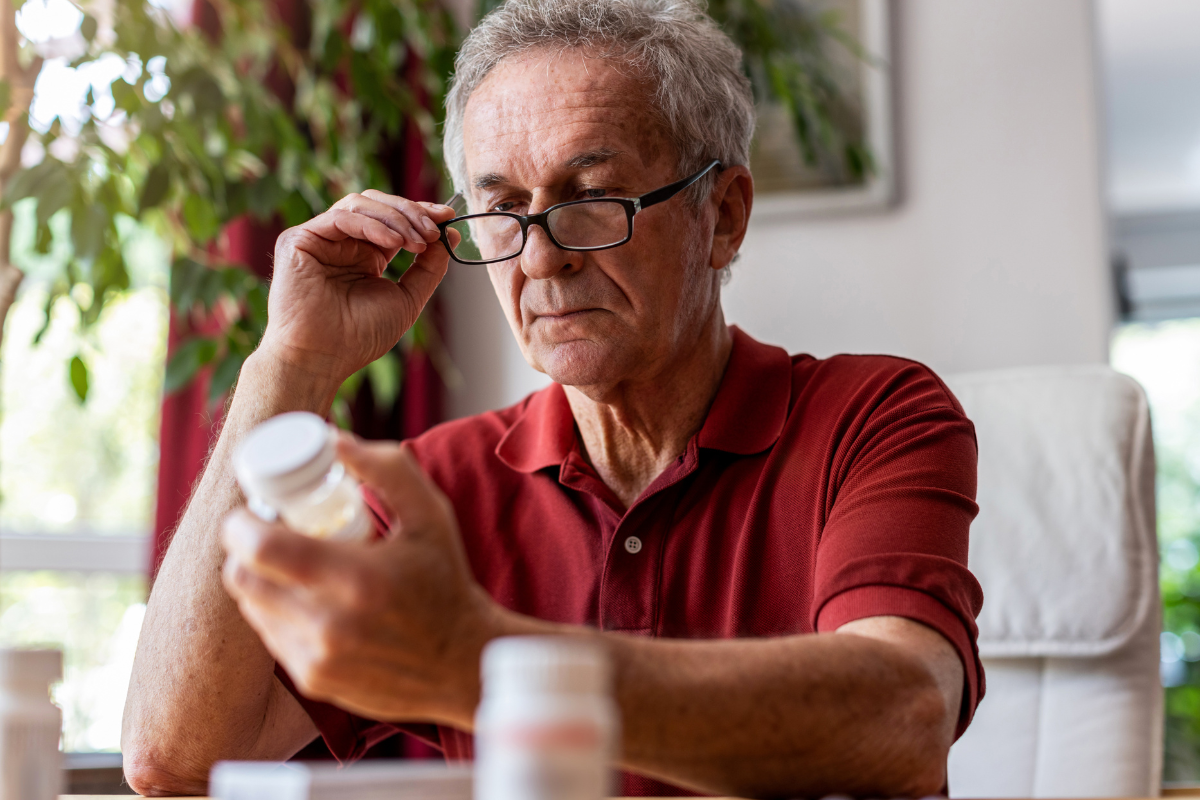
Will the effects of hormone therapy disappear?
Hormone therapy is used to prevent your body from secreting or using testosterone. But what about the side effects of hormone therapy?
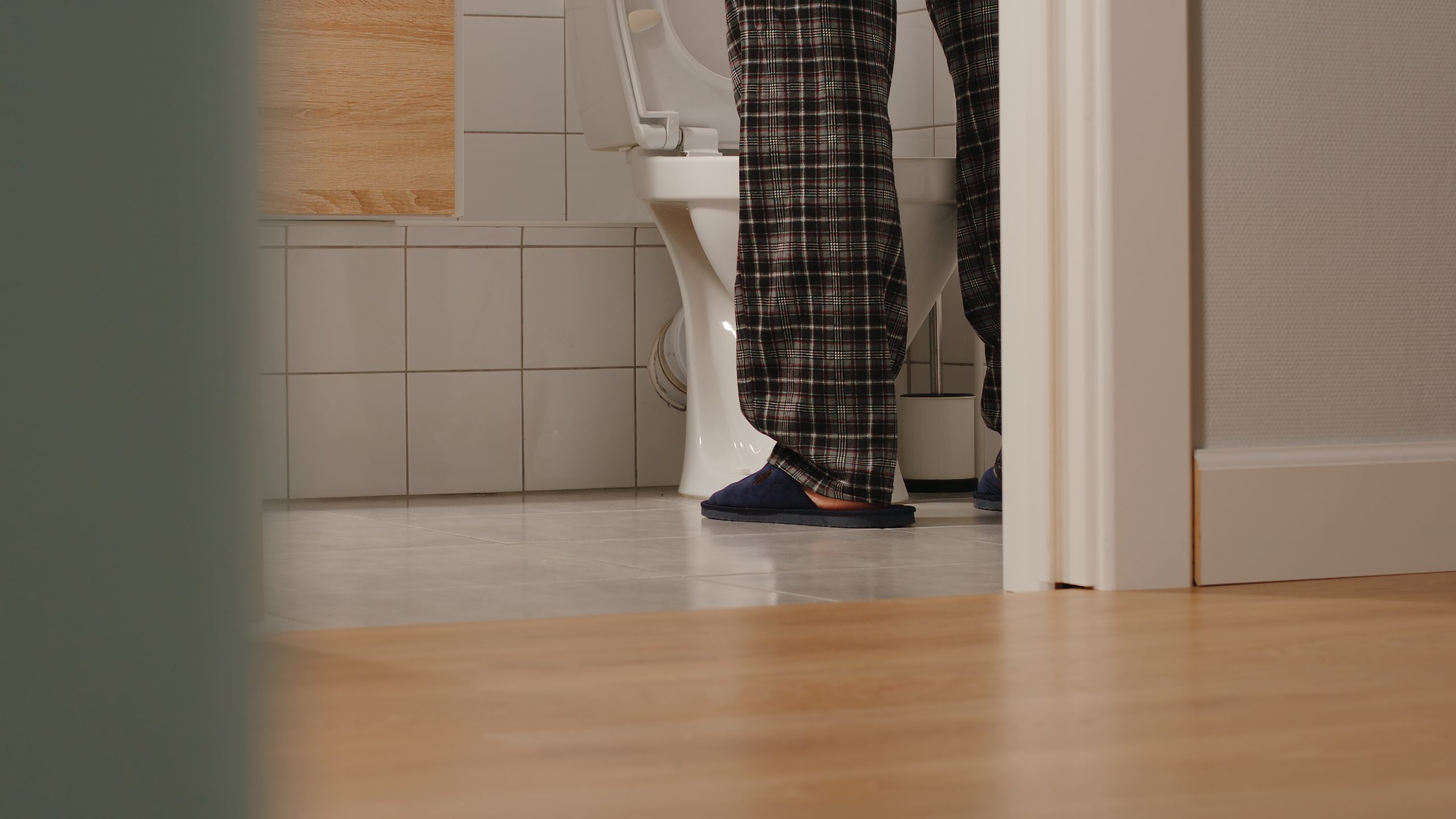
Why am I urinating my semen
If you are wondering why you urinate your semen, the answer is that you have what is called retrograde ejaculation.
Sources and references
Last medical and editorial review: April 2024. See our web page validation committee and our collaborators by clicking here.

